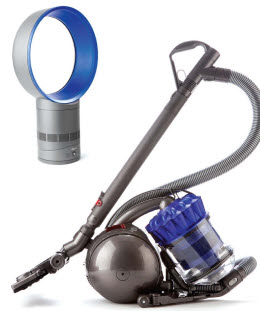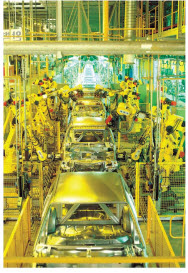Today, people have lots of broadcasting to hear news from the experts. Then, who first tried to develop such broadcasting? That was Robert Edward Turner III, founder of CNN (Cable News Network). In 1970, when the three major broadcasting networks – ABC, NBC, & CBS – made a pitch for the viewer ratings, a man named Reese Schoenfeld, who would later be the first president of CNN, came to Turner and asked, “How about broadcasting news as it happens live in real time?” Turner decided to establish an all-news channel. However, executives dissuaded his offer for its lack of marketability. Nonetheless, CNN was born and could have a chance when the Gulf War began. While other broadcasting networks were in confusion, CNN could report the live scene. People could not take their eyes off the TV. After the war, CNN could catch on to the hot issues faster than other broadcasting networks, and its outstanding points have made a legend out of CNN these days. Now CNN broadcasts to 210 nations and has a thousand correspondents.
Innovation is a brilliant work. It could reflect the greatness of one person onto the whole world. It is, however, better to remember that its beginning has come from the source of an inconvenience and a question mark. When we act in that way, it seems that many innovative products have appeared.
● Innovation in Product
-Wingless fan and Bagless vacuum cleaner

One of the crucial elements to be innovative is breaking the sterotypes people have. Representative cases include the wingless fan and bagless vacuum cleaner by the company Dyson. James Dyson, the founder of the company, eliminated the prejudice that the vacuum cleaner has to be equipped with a dust bag. A vacuum cleaner was first made by Booth, the british inventor, in 1901, but there is something that hasn’t changed for the last 100 years: that is the dust bag. It is used to suck up dust well. Then, the dust stacks up. However, when the dust stacks up too much in the bag, the ability of the cleaner become diminished. This inconvenience gave Dyson rage. Just having the idea, he invented a new product in 1984. From this, the company named Dyson was founded. Besides the vacuum cleaner, one of the other primary products in our daily lives is an electric fan. In the hot season, the fans operate zealously everywhere. Dyson doubted the fan needed wings or blades. One day, he asked a qustion to engineers. “Why does the fan have to use wings? Wind is blocked and it is hard to clean because of the wings. Furthermore, these blades are dangerous to kids who try to touch them with curiosity.” Everybody would answer him in the same way: “Be cautious about the kids and make a wing-cleaner.” However, Dyson, who has been called a British Steve Jobs, erased the frame of previous electric fans within four years.
- Kimchi refrigerator

● Management Innovation
-LEGO
Everybody used to play with blocks in childhood. It is the ‘LEGO’ that made children’s imaginations come true. LEGO is the abbrevation for “leg godt”, a Danish word meaning play well.

-Six Sigma and Motorola
Six Sigma is a management stragegy of the 21st century type for customer safisfaction by evaluating the product quality and product innovation. Of course, the Six Sigma model is incomplete without the company for which it was designed, Motorola. This company is a representative of a successful company with Six Sigma strategy and origins. Like other management innovation movements, Six Sigma also appeared in a time of crisis. In the early 1980s, when Motorola first entered the beeper market, the company didn’t match the Japanese products’ quality. The company could be damaged by its image. In the crisis, a quality improvement movement strengthened the bottom line. “Six Sigma” was developed through this crisis and brought forth an expert, Mikel Harry, and his brilliant work. First, Motorola indicated the upper and lower limit of defective rates. Once the error rate broke through the limit, the company rectified the fault on daily examination. The process was reimplemented until the error rate went down. The important thing here is that the examining process involved participation with the workers. One of the significant elements was that the workers were likewise involved in management. As a result, Motorola could diminish its defective product rate from 6,000 to 25 per one million products. This saved four hundred eighty million dollars a year. That is a truly innovative management method!
● Innovation in system
-Ford’s Conveyer belt system

-POSCO runs with smart work
POSCO enforced a new system to abolish or simplify its invalid systems, policies, events and meetings for environmental construction through a ‘smart work system’ starting this year. POSCO began by researching the staff’s opinion to start this smart work system, and each department selected gathered items freely and tried to abolish them all. In this way, POSCO is exhibiting systems innovation. A POSCO Official says that abandoning an unnecessary system and overlapping policy is very important to improve a company’s competitiveness. Through this systems innovation, it became possible to communicate with others effectively, and the reaction from staff members has also been very positive. This systems innovation is considered a successful innovation because of its good reaction and conclusion.
-Innovation city and innovative cluster
The creation of innovation cities is the business of development of Korea’s rural economy.

●CBNU is growing through innovation
-Education
CBNU was selected as an ACE business last year. As such, CBNU reorganized and increased the scale of its education organization to strengthen the basic education. The object of this business is changing CBNU into the best university, especially in teaching, through establishing a basic education. For this, a business liberal arts center, teaching support center and e-learning center were consolidated into one, creating a synergy effect. The liberal arts center directs the development and organization of liberal arts and college management and works for basic liberal arts education with students. The teaching support center helps research and development for professors and methods of learning for students. Also, they are in charge of writing tasks and making studies for improving communication skills. Lastly, the e-learning center is engaged in joint development with universities nationwide and supports an e-learning contents program which is necessary for organizing college courses. In addition, they will take charge of study counseling and guidance for students. Through this educational innovation, students and professors will receive benefits and CBNU will become the best university with its strong education basis.

-Collaborative innovation
CBNU took the NO.1 ranking in the total amount of research funds. CBNU has invested huge amounts of money, which is a tremendous innovation. Research funds increased by nearly 200 million. This result shows how active the research activities are nationwide. In this way, CBNU could produce a remarkable accomplishment due to endless tries for improvement of research competitiveness, policy support and communication with professors and students.
-Innovation in the field of research
CBNU’S competitiveness through innovation in the field of research is coming into the forefront. After enforcing its research competitiveness system, the number of theses is increasing rapidly and the level of quality is also improving largely now. In 2007, the number of SCI theses was 599. But in 2008, it became 835. Therefore, the rate of increase became 39.4%. This record is a remarkable event. Clearly, there were powerful university innovations and differentiated policies for CBNU’s research competitiveness. Usually, the average life span of a Korean enterprise is ten to fifteen years. But there are some enterprises which live more than 50 years. This is possible because they have sharpened their skills and worked very hard with endless change and innovation. In conclusion, in order to become a successful enterprise, there must be strong will to follow tradition and also to change with time. In particular, without endless change or innovation, enterprise, people and ideas will not survive today.

